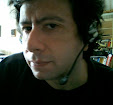Prolonged use of Latin, a slower unification process, the erudite and Tuscan influence account for the archaic traits of the language and its resistance to change as compared to other romance languages.
However, Italian enjoys a flexibility in word order unseen in most of its sister tongues, comparable only to a that of a flexive language. Not surprisingly, Italian grammarians strove to model Italian prose on Classical Latin. Looser word-order with frequent subject-verb inversions is even more noticeable in Southern Italian. A few examples of O-V-S order:
“Bella era quella cantante!” (lit. “beautiful was that singer!”) “Che, l’hai incontrata, tu?” (lit. “What, her meet did you?”) ”Sì, alla Scala di Milano cantava!” (lit. “Yes, at the Scala di Milano sang she”). Northern (non-standard) Italian has always S-V-O, perhaps because of its proximity to France. On the contrary, the Florentine dialect can rephrase sentences more loosely.
Italian is modeled on literary Florentine, whose poets had a long love-affair with Cicero (see right column: Trencento and Renaissance) : when we see this, flexibility in word-order will appear less capricious. Word order tend to be (O-) V-S in the south ( "questo ha fatto lui!"), where S-V-O is favored by northern speakers even in cases when emphasis requires O-V-S.
In questions as "Va via subito Marco?" the accent is certainly on Marco, but not so in "Marco va via subito?". However, the growing importance of northern media today seems to be affecting such liberty in spoken usage.
WANT TO LEARN MORE ABOUT ITALY?
Bibliography (texts consulted for this research)
Monographies
Migliorini, B. Storia della lingua italiana. Firenze, Sansoni, 1987.
Bruni, F. L'italiano. Elementi di storia della lingua e della cultura italiana: testi e documenti.Torino, UTET, 1984.
AA.VV. L'italiano nelle regioni, a cura di F. Bruni. Torino, UTET, 1997, vol.1
Texts
Manacorda, G. e Gangemi, G. Storia della letteratura italiana. Roma, Newton-Compton, 2004.
Giudice, A. e Bruni, G. Problemi e scrittori della letteratura italiana. Torino, Paravia, 1973, vol.1.
Salinari, C. e Ricci, C. Storia della letteratura italiana. Bari, Laterza, 1983, voll.1-2.
Dante Alighieri, Divina Commedia. A cura di U. Bosco e G. Reggio. Firenze, Le Monnier, 1979.
Antologia della poesia italiana: Il Duecento. A cura di C.Segre e C.Ossola. Torino, Einaudi-Gallimard, 1997.
Antologia della poesia italiana: Il Trecento. A cura di C.Segre e C.Ossola. Torino, Einaudi-Gallimard, 1997.
Dante Alighieri, De vulgari eloquentia. Milano, Garzanti, 1991.
Francesco Petrarca, Canzoniere. Torino, Einaudi, 1964.
Giovanni Boccaccio, Decameron. Milano, Mursia, 1966-1989.





No comments:
Post a Comment